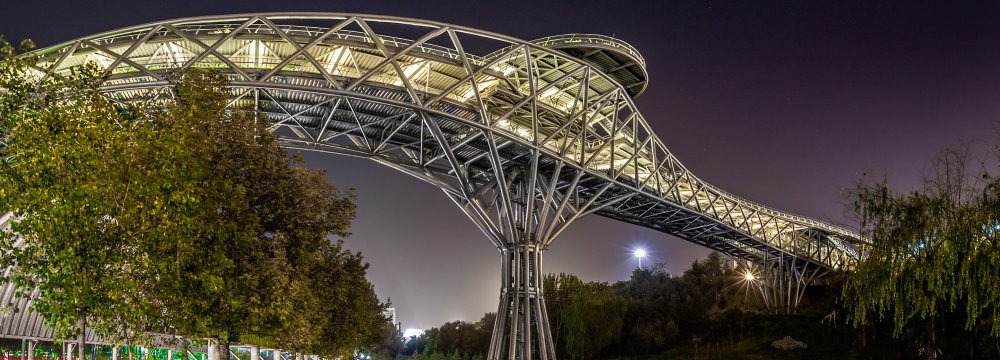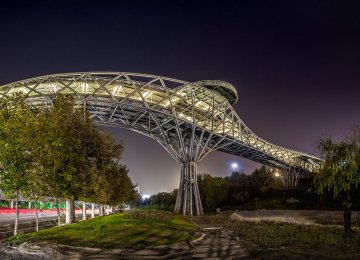Three Iranian projects are among the 19 shortlisted at the 2016 Aga Khan Award for Architecture (AKAA).
Iran is the only country with three projects in the final shortlist among the 14 nations. It is followed by Bangladesh, Morocco and Spain, each with two projects, Honaronline reported.
Other 10 projects are from Azerbaijan, China, Denmark, Jordan, Kosovo, Lebanon, Nigeria, Qatar, Saudi Arabia and Senegal.
The finalists, which were selected from among 348 projects from 69 countries, will be competing for the $1 million cash prize.
According to the award website, all the projects are now undergoing rigorous investigations by on-site reviewers - architects, conservation specialists or structural engineers - who visit and evaluate each project first-hand. Their reports are the basis for the jury’s selection of the eventual winners.
Tabiat (Nature) Pedestrian Bridge in Tehran, 40 Knots House in Tehran and Manouchehri House in Kashan are the three Iranian entries.
Tabiat Bridge that connects two parks - Ab-o-Atash (Water and Fire) and Taleqani - separated by a highway (Modarres) in northern Tehran has become a popular urban space.
A 270-meter-long curved pedestrian bridge, it is a spatial steel structure large enough to create an inhabitable architectural space, where people congregate, eat and rest rather than just pass through.
Innovative Brick Facade
The 40 Knots House is a five-storey residential building in western Tehran, entirely covered with a mesh of bricks impaled on rod bars as contiguous pearl necklaces. The facade appears as a collection of intricately interwoven bricks.
The distances between the bricks have been adjusted to create an opaque effect, through which light does not pass, while when there is a window behind the mesh, it becomes a transparent grid. It has been selected for its innovative use of low-cost traditional brick facade.
Manouchehri House is an ancient 19th century home in Kashan, Isfahan Province, which has been restored into a boutique hotel and textile center.
The building, which had fallen into complete disrepair, currently houses not only the textile workshops for brocade, silk, cotton and velvet weaving, but also features the city’s finest dining establishment, a contemporary art gallery, a handicraft shop, and a subterranean movie house.
The project has met so much success that it has drawn thousands of people from across the globe, and has triggered many similar initiatives across the historic city.
Impressive Works
Ghanaian-Scottish architect and academic Lesley Lokko, one of the jurors of the award, said she was particularly impressed with the work coming out of Iran and Bangladesh, especially the work of young women architects.
Except for the Manouchehri House which was renovated by a male veteran architect Master Akbar Helli, the other two Iranian projects were designed by young female architects.
Leila Araghian, 32, is the chief architect and designer of the Tabiat Bridge and Habibeh Madjdabadi, 38, is one of the architects of 40 Knots House, the other being Alireza Mashhadimirza.
The AKAA selects projects - from slum upgrading to high rise green buildings - that not only exhibit architectural excellence but also improve the overall quality of life.
Since its launch 39 years ago, over 110 projects have received the award.
Presented in three-year cycles, the award recognizes examples of architectural excellence in the fields of contemporary design, social housing, community improvement and development, historic preservation, reuse and area conservation, as well as landscape design and improvement of the environment.
Iranian architect Farrokh Derakhshani is the director of the award and Iranian-American architect Mohsen Mostafavi, is one of the jury members. The winners will be awarded in autumn.





